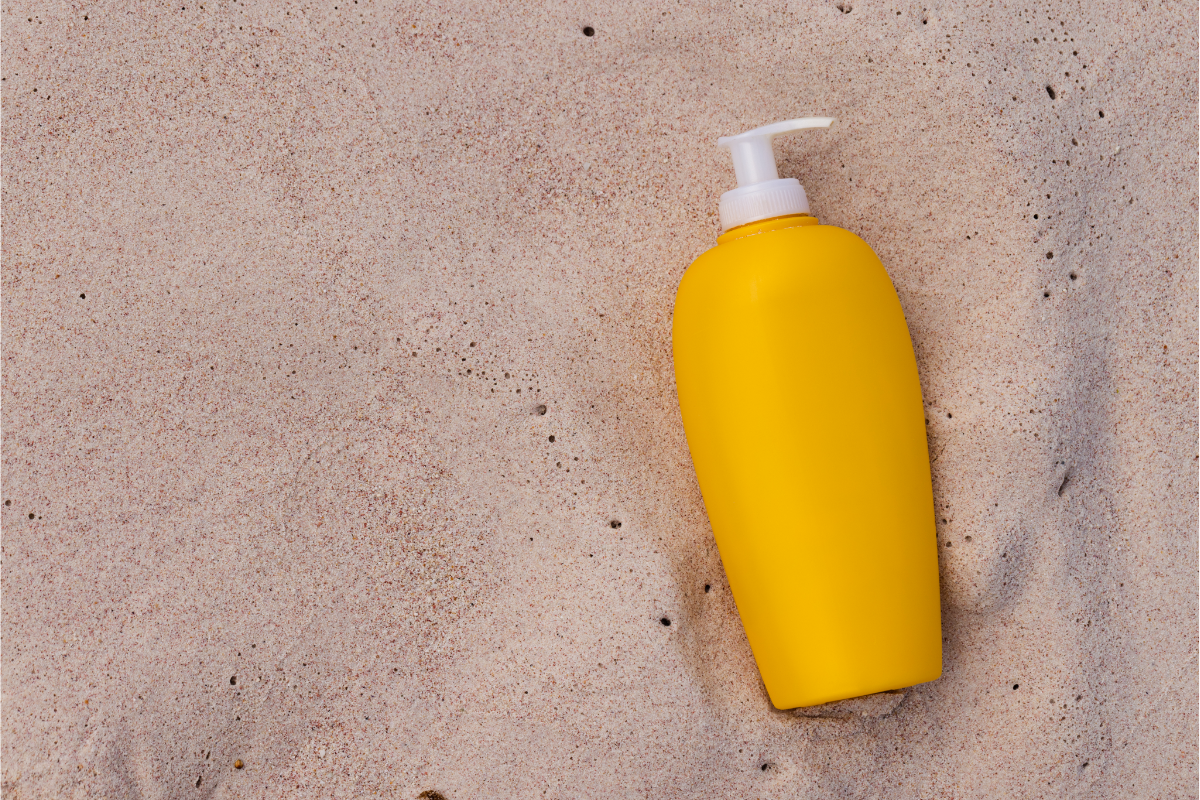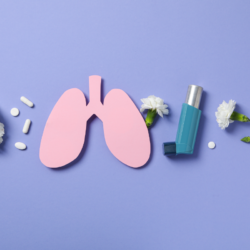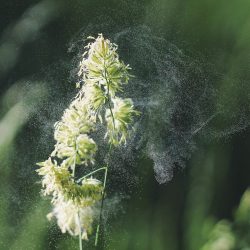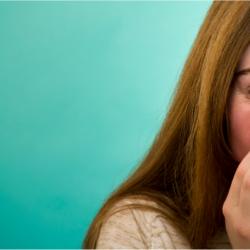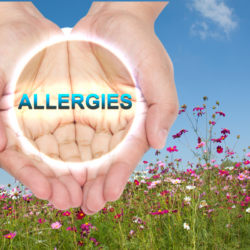With the arrival of summer, the streets light up with life and the terraces overflow with joy. But for those sensitive to the sun’s rays, this beautiful season can prove more complicated. Did you know that the sun’s ultraviolet rays can cause allergies in some people, known as solar urticaria or polymorphic sunburn?
When the skin is exposed to the sun, particularly in sensitive areas such as the décolleté and shoulders, skin reactions such as red patches or burning sensations can occur. This is particularly true for those taking photosensitising drugs or synthetic anti-malarials. Fortunately, there are solutions for enjoying the sun in complete safety.
Sun protection, through the use of suitable sun creams and the wearing of sunglasses, is essential to prevent the symptoms of sun allergy. In this article, we’ll explore the best practices for protecting yourself from the sun’s harmful rays, while still making the most of the joys of summer.
Why does our body react to light?
Sun allergy, also known as lucite, is part of what are commonly known as photodermatoses or abnormal skin reactions to light. The skin can react differently to radiation from one person to another. While we are used to protecting ourselves from UVB rays, which are known to be the main cause of sunburn, UVA rays are just as aggressive. In fact, unlike UVB rays, which act superficially on the skin, UVA rays penetrate its deeper layers. And this behaviour is often less tolerated by our bodies, which rely on immunity mechanisms. This can lead to allergic reactions. It should be noted that any UVA ray, whether natural or from a tanning booth, causes the same symptoms in a person suffering from intolerance to this light. And, although lucite is generally not dangerous, this condition can be very embarrassing and uncomfortable.
What are the different forms of sun allergy?
There are different forms of sun allergy, the most common of which is benign summer mite. Its symptoms can vary from one person to another. Generally, however, they take the form of small red papules followed by intense itching. These symptoms can last for up to 15 days at a time. It is a form of lucite that particularly affects young women. The hands, neck and décolleté are the areas most affected.
But there are also other types of allergy, such as solar urticaria, which can be identified by the appearance of superficially swollen red patches, always followed by itching. It occurs as soon as you are exposed to the sun, but gradually diminishes until it disappears completely when you move into the shade.
Polymorphic Lupus, on the other hand, is very reactive and generally appears within 12 to 24 hours of exposure to the sun. Polymorphic Lupus often appears in early spring. It is characterised by the appearance of small red papules or patches resembling sun spots, as well as itching. It can affect the whole body, including the face. It is important to treat it quickly to prevent it from worsening or becoming chronic.
What factors contribute to sun allergies?
Some people are more prone to sun allergies than others, due to various factors.
- These include fair, sensitive skin. People used to a northern climate or who do not regularly expose themselves to the sun seem to be more prone to sunstroke.
Prolonged exposure to the sun without adequate protection is also an aggravating factor in this skin rash. - In addition, taking certain medications, such as antibiotics, antidepressants or anti-inflammatories, sometimes triggers excessive reactions when these products come into contact with UV rays.
- Genetics are also an important factor in triggering a sun allergy. This means that some people can inherit the condition from their parents. These people have a genetic predisposition to developing lucite, regardless of the preventive measures taken.
How can lucite be prevented?
Now that you know the different forms of allergy and the factors that can lead to them, here are a few tips on how to prevent them effectively:
- Firstly, avoid exposure to the sun at the hottest times of the day, between 12pm and 4pm. The aim is not to hide from the sun, but rather to avoid the damage caused by its rays, which are stronger at this time of day. It is also preferable to have short but regular exposures rather than infrequent but prolonged exposures.
- Then use a sun cream with a high sun protection factor and reapply every two hours.
- By wearing long, light clothes to cover exposed skin, you can protect your skin from the sun’s harmful UV rays. Opt for sunglasses to protect your eyes.
- Keeping your skin hydrated can help prevent sun allergies. So it’s important to drink enough water and use moisturisers in the evening.
- Avoid products that can irritate the skin, such as perfumes and abrasive chemicals. These cosmetic agents can trigger sun allergies.
- If you are predisposed to sun allergies, consulting a dermatologist can help determine the best means of prevention for your skin.
- You can also prepare your skin by opting for foodsupplements such as OXELIO Bronz. These little capsules give your body what it needs to fight the sun’s harmful rays more effectively.
What pharmacy products should I use if I’m allergic to the sun?
When it comes to sun allergies, it’s essential to choose the right products to protect and soothe the skin. Here is a comparative table of recommended solutions:
| Product | Type | Characteristics |
|---|---|---|
| Bioderma Photoderm Mineral Fluid Spf50 | Mineral sunscreen | Specially designed for allergic skin, offers high protection SPF50 |
| Eucerin SUN LEB Protection Spf50 Texture Gel Cream | Sun cream | Light gel-cream texture, ideal for sensitive skin, SPF50 protection |
| Synergia Régéderm Skin Beauty | Food supplement | Helps prepare the skin for the sun, improves skin tolerance |
| Soleil-Biafine Sun Care Spray Allergy SPF50 | Sun Protection Spray | Protection against sun allergies, easy to apply, high protection SPF50 |
| Inovance Dermovance | Food supplement | Designed to improve sun tolerance, contains antioxidants |
These products, combining sun protection and skin care, are specially formulated to minimise allergic reactions to the sun while providing effective protection against UV rays.
How can summer sunburn be effectively treated?
If you think you’re suffering from summer mite, it’s important to take action. Treatments can relieve symptoms and prevent recurrences. As well as the prevention tips mentioned above, which you should adopt as a matter of urgency, you can reduce itching by taking an antihistamine or applying an anti-itch lotion. Lotions containing aloe or camomile can be particularly useful.
But the most effective and least harmful treatment for sun allergies is undoubtedly homeopathy. As it is chemically non-toxic and has no side effects, it is ideal for allergies caused by drug reactions. Allergie Solaire Homéopathie Kit Lucite Estivale is a kit that quickly stops the eruption of small pimples caused by exposure to the sun.
How should Polypodium leucotomos be used to treat Lucite?
Polypodium leucotomos is a promising treatment option for polymorphic dermatitis, a common skin reaction following exposure to the sun’s rays. This Central and South American fern, used in capsule or tablet form, has antioxidant and anti-inflammatory properties. These characteristics help to reduce inflammation and redness, common symptoms of lucite.
Clinical studies have demonstrated the effectiveness of Polypodium leucotomos in providing photoprotection, particularly against ultraviolet rays, a major concern for people suffering from sun allergies such as solar urticaria. A study published in 2015 revealed that a daily dose of 240 to 480 mg of this extract was effective in reducing the damage caused by ultraviolet rays and reducing the frequency of sunburn.
Has the efficacy of Polypodium leucotomos been proven?
The efficacy of Polypodium leucotomos in protecting against the harmful effects of ultraviolet rays and as a treatment for certain sun-related skin reactions, such as lucite, is supported by several scientific studies.
Is Polypodium leucotomos effective against the sun?
A 2015 study demonstrated that oral extract of Polypodium leucotomos, administered twice daily to healthy adults for 60 days, is safe and effective in reducing the harmful effects of ultraviolet radiation. This randomised, double-blind, placebo-controlled study showed that there was no change in safety assessments, and that the group treated with Polypodium leucotomos had a lower risk of sunburn and a reduction in the intensity of UV-induced erythema.
Photoprotection and antioxidant properties :
Another 2019 article highlighted that Polypodium leucotomos is widely available as an oral supplement and has demonstrated photoprotective properties, offering additional benefit when used in addition to topically applied sunscreens. This review evaluated different formulations of Polypodium leucotomos extract, highlighting the consistency of a specific brand supported by extensive published evidence.
Protective effect against photo-ageing:
In a study published in 2016, Polypodium leucotomos was shown to play a significant role in protecting against photoageing. The study highlighted its antioxidant properties and its ability to prevent UV-induced DNA damage.
What is the emotional and social impact of sun allergies?
Sun allergies, by causing visible symptoms such as red patches, can cause psychological distress in those affected. This distress is often linked to cosmetic discomfort, leading to a lack of self-confidence and sometimes even social isolation. Areas exposed to the sun, such as the face, décolleté and shoulders, are often the most affected, which can increase sensitivity to the gaze of others and intensify feelings of discomfort.
Management strategies
- Psychological support: It is essential to recognise the emotional impact of sun allergies and to seek psychological support if necessary. Consultations with a psychologist or a support group can provide a safe space to express emotions and learn how to manage the psychological impact of the allergy.
- Education and awareness: Understanding sun allergy and its implications can help to manage it better. Raising awareness of the importance of sun protection, such as regular use of sun creams and wearing sunglasses, can also reduce the anxiety associated with sun exposure.
- Preparation and prevention: Adopting preventive measures, such as avoiding the sunniest hours for outdoor activities and choosing protective clothing, can help reduce the frequency and severity of symptoms.
- Communication: It’s important to talk openly about your allergy with those around you to encourage understanding and support. Communication can also help to deconstruct misconceptions and reduce feelings of isolation.
- Acceptance and adaptation: Learning to accept your condition and adapt can be a gradual but vital process. This can include seeking out new, adapted activities and discovering new ways of enjoying the outdoors while protecting oneself.
The sun: Friend or foe of our allergies?
The relationship between exposure to the sun and the development of allergies has long intrigued researchers. Recent studies are shedding new light on this complex interaction, challenging our previous knowledge and paving the way for new approaches to prevention and treatment.
UV rays and allergic diseases: A surprising link?
Research has shown that children with eczema had less exposure to UV rays during their first months of life than those without eczema, suggesting a potential protective effect of UV rays against certain allergies.
Is there a link between vitamin D and allergies?
Other studies are examining the role of vitamin D, often synthesised under the effect of sunlight, in the development of food allergies. The results reveal a complex relationship, influenced by various factors such as genetics, eczema and place of birth, underlining the need for a more in-depth understanding of these interactions.
These recent findings reveal the significant impact of sun exposure on allergies, prompting a re-evaluation of prevention and treatment strategies based on our interaction with the natural environment.
FAQ
- What is sun allergy?
- Sun allergy is an abnormal reaction of the skin to exposure to ultraviolet rays, causing itching, redness and rashes.
- What are the symptoms of sun allergy?
- Symptoms include itching, redness, pimples, patches and blisters on areas exposed to the sun.
- How can sun allergy be prevented?
- Prevent sun allergy by using adequate sun protection, limiting exposure to the least sunny hours and wearing light, covering clothing.
- What type of sun cream is recommended for people with sun allergies?
- Broad-spectrum, high SPF (SPF 30 or more) and hypoallergenic sun creams are recommended for people with sun allergies.
- Can sun allergies be treated?
- Yes, treatments include topical corticosteroids, oral antihistamines and soothing creams to relieve symptoms. Consult a doctor for appropriate treatment.
- Are sun allergies hereditary?
- There may be a genetic component to some sun allergies, but other environmental and individual factors also play a role.
- Can sun allergies disappear over time?
- Allergic reactions to the sun can diminish over time if exposure to the sun is gradually increased, allowing the skin to adapt. However, it is important to continue protecting yourself from the sun.
- Can children suffer from sun allergies?
- Yes, children can also be prone to sun allergies. It’s important to use sun protection that’s suitable for children and to limit their exposure to the sun during the sunniest hours.
Source:
- Safety and Efficacy of Oral Polypodium leucotomos Extract in Healthy Adult Subjects J Clin Aesthet Dermatol . 2015 Feb;8(2):19-23.
- J Clin Aesthet Dermatol . 2019 Aug;12(8):45-46. Epub 2019 Aug 1. Polypodium Leucotomos Extract (PLE): New Study Gives Evidence-based Insight into “Ain’t Nothing Like the Real Thing.”
- Int J Environ Res Public Health . 2021 May 19;18(10):5429. doi: 10.3390/ijerph18105429. The Influence of Sunlight Exposure and Sun Protecting Behaviours on Allergic Outcomes in Early Childhood
- Curr Opin Allergy Clin Immunol. 2015 Aug;15(4):350-7. doi: 10.1097/ACI.0000000000000177. Sunlight, vitamin D and food allergy

